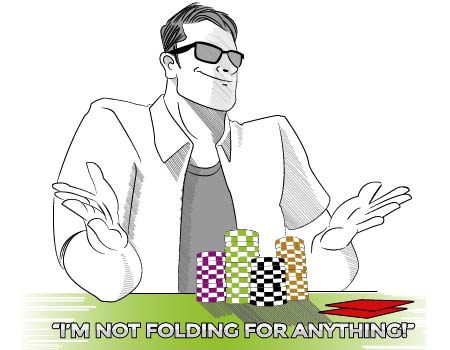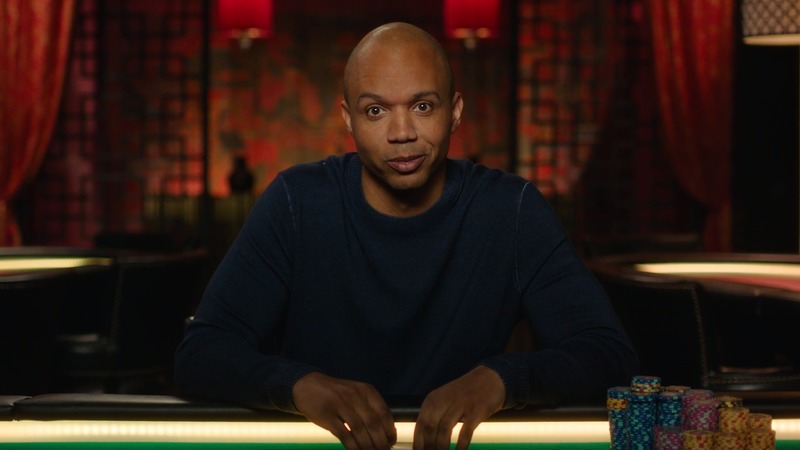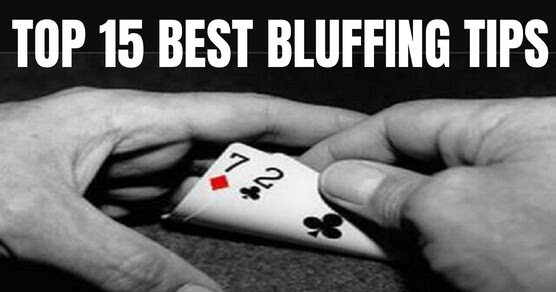Poker Bluff Tips
Bluffing Is an Essential Strategy for All Poker Players. Bluffing is not a science it's an art. The 10 tips above however, will help you perfect a bluffing strategy that will allow you to bluff your way to bigger profits. Poker Bluffs & Breakeven% Even if poker math scares you, the breakeven percentage (BE%) is very easy to understand. Simply put, the breakeven percentage lets you know how often your opponent needs to fold, given the size of your bluff, for you to make an immediately profitable bluff.
When someone first starts learning about how to play and win at poker, they invariably come across the term “bluffing”. It’s a concept that is quickly recognized but rarely the complexities of why and when you should be bluffing are explained in any great detail.
Now if you’ve found your way to this article, I’m guessing you already have a basic understanding of what bluffing in poker is all about – so I won’t bore you with the basics.
But what I will offer you is some helpful tips and advice on how to go about this business of bluffing, enabling you to win more pots without a showdown.


Please bare in mind, however, that bluffing really is only a small part of being a good poker player.
It is by no means as significant as popular culture, and movies, make it out to be. But it does have its place in any solid poker playing strategy, and if you want to learn how to win more money playing poker, you’ll do well to learn it.
With this in mind, let’s get to the tips:
- The first and one of the most important tips when it comes to bluffing is to always be aware of how many players you’re going to try bluffing. You may get away with it if you’re bluffing one player, maybe two, but if you’re playing against a lot of people who are still involved in the pot, then chances are someone will have a strong hand and will just call you on your bluff. A common misconception is that just because you raised the pot before the flop, this means you continuation bet on the flop, even when you miss yourself. This is a big weakness in many beginner poker players’ game, since it doesn’t take into account the flop and the likelihood that it hit one of your opponents. If your pre-flop gets many calls, the chances of a bluff working on the flop is extremely rare, you’re basically burning money.
- The second tip I have for you is to try and stay away from bluffing people who are much better than you, or much worse than you. Why? Because an expert poker player is much more likely to see through your bluffing because they’re good hand readers and will know the likelihood of whether you will actually have a hand. Similarly, if you’re playing against a really bad player, your bluff is very likely to be called because these types of players don’t know how to fold.
- As a general rule of thumb, however, you’ve got a better chance with your bluff if the other players have shown weakness after they’ve checked, instead of bluffing when the other players have betted.
- This next tip is killer and will boost your chances when it comes to implementing a successful bluffing strategy. If you can, always imply specific (and strong) hands when you bluff. In other words, by your bluffing, you are suggesting that you maybe have a strong hand like a flush/straight/three of a kind, which will boost your chances of success considerably. When the board is scary it increases the likelihood that your opponent will fold a medium strength hand. For example, let’s say you called a player’s bet with an open ended straight draw on the flop. You don’t hit your draw on the turn, but a flush is now possible, and your opponent checks, which is usually a good indication they’re giving up on the hand. If you know your opponent is capable of folding, this would be a good spot to bluff with your straight draw, especially if you have an additional flush draw now to go with it, if you expect your opponent to fold their one pair hand, because its very possible you were calling with a flush draw on the flop.
- A good time to practice your bluffing skills is when all the cards are out, and you don’t have anything in a heads up situation. This is as good a time as any to practice your skills, but remember, don’t overdo it otherwise you’ll become predictable. You want to find a good balance so that your bluffs are believable. If your bluffs are never getting called, you likely aren’t bluffing with enough frequency.
I have published an article on Poker Tells, don’t forget to have a look and learn about poker tells when you playing poker.
Winning at poker isn’t all about the fundamentals.
Poker Bluff Tips 1x2
There are a handful of special power moves that, when mastered, can make the difference between winning a little and winning a lot.
In this 10-part beginner poker strategy series we'll to show you exactly how to use these powerful poker moves to make more money.
Today we’re explaining the bluff catcher. We’ll show you how, against the right opponents, even marginal hands like ace-high and bottom pair can make you big money on the river.
What is a Bluff Catcher?
The What: The term ‘Bluff Catcher’ is exactly what it sounds like: A hand that, while not super powerful, is good enough to beat your opponent when he’s bluffing. It’s a hand that’s not strong enough to value bet, and not strong enough to beat your opponent’s value-betting range, but has showdown value against bluffs.
The When: Generally when people talk about bluff catchers they’re referring to calling the final bet on the river.
The Where: Bluff catchers are most commonly found in bluffing games like No-Limit Hold’em and Pot-Limit Omaha but the concepts involved are useful in any poker game.
The Why: By exploiting players who bluff too much you can turn mediocre hands that you’d usually be folding into money-makers.
Bluff Catcher By Definition
The most important part of using this poker power move is understanding when you’re holding a bluff catcher hand, and whether the conditions are right to call that bet on the river.
Like so much in poker, the right decision depends entirely on what you know about your opponent.
You must understand his value-betting range, and his bluffing frequency. You must understand his behavior.
By definition a bluff catcher is a hand that’s behind your opponent’s entire value-betting range. So because you can only win against a bluff, it’s paramount to be able to spot players and situations where bluffing is common.
Quite simply, the bluff catcher will never work against someone who never bluffs.
Poker Bluff Tips Game

To Catch a Bluff, There Must Be a Bluff
At a table of ABC/TAG players you might as well forget about bluff catchers and focus on getting value out of your big hands. But if you’re up against tricky, aggressive grinders you’ll be leaving a ton of money on the table by folding everything except the nuts.
Because good players understand that holdings are rarely bulletproof, they’re going to try to exploit you by firing missed draws, third barrels and straight-up bluffs on the river.
To use the bluff catcher effectively you have to identify players who are doing this too much, and exploit them by calling with the hands they’re trying to make you fold.
Against the right player, in the right situation, calling a river bet with ace-high will make you a fortune over your poker career. In short, you’re looking for overly aggressive players that bet and raise more than they should.
Related Reading:
The Math of the Bluff Catcher
The easiest way to think about the math behind a bluff catcher is to put it in terms of pot odds and equity.Usually when you’re calculating expected value you’re comparing pot odds and your probability of winning a hand by hitting a draw.
But since a bluff catcher can only win when your opponent is bluffing, you can substitute his bluffing frequency for the probability of hitting your draw to see whether you’re making a profitable call.
Let’s look at an example to make that point a bit more clear: It folds to the button in a $1/$2 No-Limit Hold’em cash game and he raises to $8. The small blind folds and you call with A♦3♦.
Pot = $17. The flop comes down 9♦8♠3♣ and you check-call a $10 bet.
Pot = $37. You both check the 2♥ on the turn, and the 2♣ hits the river. You check and the button bets $20.
Your hand only beats air so if he’s got a pair or better you’re sunk. Should you make the call?


To find out whether the call will be profitable in the long run you need to figure out the pot odds and compare that to your opponent’s bluffing frequency in this spot.
You have to call $20 to win $57 so the pot is laying you 2.85 to 1 on the call. If you believe your opponent’s river bet is a bluff 50 percent of the time you must call, since your odds against winning are 2 to 1, and the pot is offering you a better than 2 to 1 price.
Related Reading:
Put Your Opponent on a Range
While putting an exact number on bluffing frequency is impossible, you must do everything you can to understand your opponents’ tendencies and behaviors in common river-betting spots.
If you can identify the spots when they’re bluffing too much, you’re in the right position to pick them off with a weak hand you may otherwise have folded.
The most crucial skill to master in poker is the ability to put your opponent on a range and that includes knowing when he’s bluffing and when he’s value-betting.
The more accurately you can estimate the probability that your opponent is bluffing, the more money you’ll be able to make by being there to catch him.
Related Reading:
More Essential Texas Hold'em Moves: